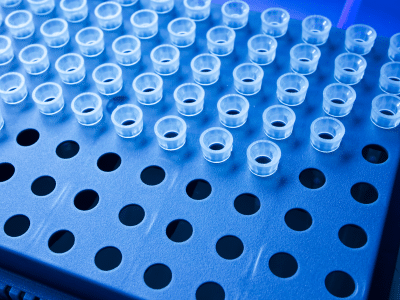Washing laboratory glassware is an art! Indeed, it is necessary to juggle between cross-contamination, the lab technicians’ safety and the hygiene rules imposed.
This is why LABELIANS is here to help you, so that you no longer have to ask yourself any questions on this subject. We have tried to make this blogpost as simple as possible so that even novices can find their way around.
First of all, it is good to know that washing is done in two steps:
- 1st Step : Prepare the glassware before machine treatment
- 2nd Step : Treat the material in the machine
- 3rd Step : Control and store laboratory glassware
Preparation before machine processing
Before using new laboratory equipment, it is recommended that it be treated in a standard way to remove any contamination from transport or packaging.
Regarding glassware, it is advisable to artificially age it in order to limit sensitisation to aqueous substances.
How to do this?
Place the glassware to be decontaminated in an autoclave, add ultra-pure water and bring to the boil (liquid programme: 121°C, 20min).
According to Directive 2000/54/EC, biological working substances can cause toxic and sensitising effects that can lead to infections in humans. They also pose risks to the environment.
How can this be avoided?
All materials that come into contact with biological working substances must be sterilised after use and before machine processing. Sterilisation is not mandatory for low risk groups.
Labels are an integral part of laboratory organisation. However, they can disrupt the life of the laboratory if they are not properly removed and their residues are not completely removed.
A poorly removed label can clog the processing machines. As for the glue residues, they are deposited in the machine circuit and recontaminate the glassware.
How can this be avoided?
Remove the labels and their glue residues with a solvent. Or place the laboratory glassware in an alkaline solution with surfactants.
Beware that any lapping grease entering a processing machine may contaminate the entire glassware in the laboratory.
How can this be avoided?
Few lapping greases are water soluble, so it is strongly advised to remove them with a solvent. If some of them persist, you can use cleaners with a high alkaline content.
For any laboratory glassware that comes into contact with these types of substances, it is recommended to follow this procedure:
- Drain the equipment
- Rinse with demineralised water
- Drain the glassware
In order to avoid any corrosion of the stainless steel in contact with the glassware – due to these substances – the following procedure is recommended:
- Empty the equipment
- Rinsing with demineralised water
- Drain on a non-corrosive surface
- Wait for complete drying before installation on the loading racks
In this case, the following recommendations should be followed:
- Drain the material
- Drain the material until it is almost completely dry
- Rinse with hot water (good quality water recommended)
- Drain the glassware again
In this case, pre-wash the glassware with solvent or by dipping it in an aqueous alkaline solution.
Caution: the machine treatment should be done at high temperatures over a long period of time.
Solvents can generate different types of risks: flammable, explosive or corrosive.
In order to limit the risks when processing glassware, it is strongly recommended to follow the following procedure beforehand:
- Empty, drain and degas the material
- Rinse with good quality hot water
- Drain the glassware
- Degas again if necessary
- Immediately start the treatment in the machine
Caution: never store glassware with solvent residues in the treatment machine
In order to limit the risk of clogging by residues, here are the washing recommendations:
- Drain the equipment
- Rinse with good quality or demineralised water or solvent
- Soak glassware in slightly acidic or alkaline demineralised water
Just before machine treatment :
- Remove the material from the water
- Drain
- Drain
- Start the treatment in the machine
In general, marker inscriptions are removed during machine processing. However, some of them may remain.
So what can you do?
You can wipe the glassware with a solvent or soak it in an alkaline solution with surfactants.
Good to know: some tests have shown that blue and green inks are easier to remove than red or black ones, depending on the stains used.
Now that your material has been thoroughly cleaned of all types of residues, it is ready for safe machine treatment.




